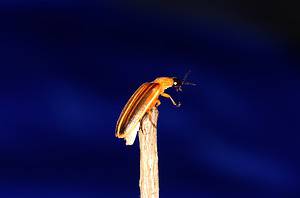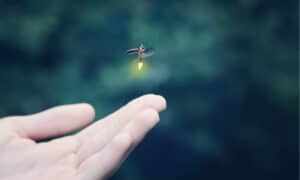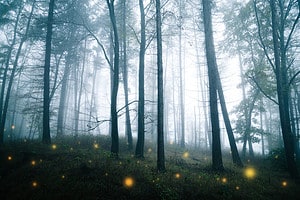Fireflies are beautiful insects. Some people know them as lightning bugs. Despite their name, fireflies are beetles, not flies. Their lower abdomen lights up, which they use to communicate and find mates. There are also over 150 species of fireflies living in North America. They thrive in all kinds of climates, including brutal winters and scorching hot summers.
In this article, we will dive into where fireflies go in the winter and other fun facts! Keep reading to learn more.
Common Types of Fireflies
There are 2,000 types of fireflies in the world. They are more noticeable during summer nights when they light up and flicker. While they all flicker, each firefly has its patterns and special traits. Continue reading to discover common types of fireflies and what makes each species special.
1. Common Eastern Firefly
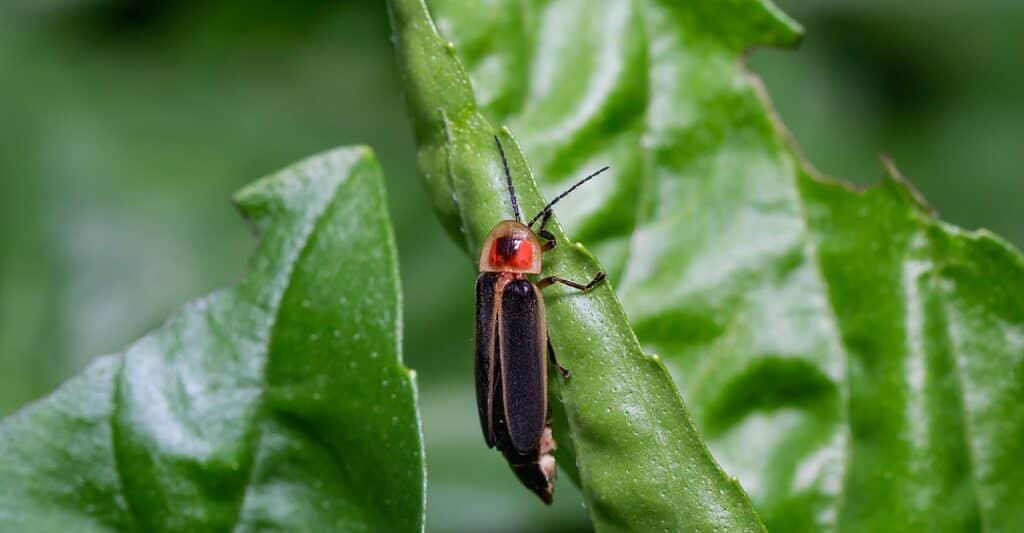
Common eastern fireflies are dark brown with light orange markings.
©iStock.com/ErikAgar
Photinus pyralis, also known as the common Eastern firefly is a small beetle and the most common firefly in North America. It communicates with light patterns, especially when looking for mates. The male flashes blinking lights at females, and they respond slowly. Adults often grow up to 15mm. They are dark brown with light orange markings. Common eastern fireflies eat pollen, snails, and slugs.
2. Luciola Substriata
Luciola substriata is a type of firefly found in parts of India, Taiwan, China, and Japan. These fireflies have short bodies, growing up to 10.5mm long. Female luciola substriata fireflies are larger than males. Their body is yellow-orange with a dark brown head and eyes. These fireflies live in marshes and wetlands. It’s rare to see them by the end of the year, but they are found from April to December.
3. Synchronous Fireflies
Synchronous fireflies are a species of firefly that lives in the Great Smoky Mountains National Park. In large groups, they synchronize their light patterns. Their scientific name is Photinus carolinus. Within a two-week window between May and June, they produce a mating display. Every few seconds, they flash their lights multiple times. It’s such a spectacular sight that thousands of people travel to this park to watch its stunning display.
4. Phausis Reticulata
Phausis reticulata, also known as the blue ghost, is a common firefly species in the eastern and central United States. Unlike other fireflies, this species glows bluish-white. The closer blue ghost fireflies are, the more their glow appears bright green. They are all brown with large eyes. Interestingly, only male blue ghost fireflies have wings. Females are wingless and remain in larval form. During mating season, male fireflies seek out the females in warm and moist forests.
5. Shadow Ghost Fireflies
Shadow ghost fireflies belong to the Lampyridae family. They are native to North America. These fireflies thrive in warm and humid areas. Only female shadow ghost fireflies emit light. They also live in a larva-like body their whole lives. Adult male shadow ghost fireflies are winged but lanternless. The scientific name for this species is Phausis inaccensa. While common in the U.S., they are rarely seen or documented.
What Do Fireflies Go in the Winter?
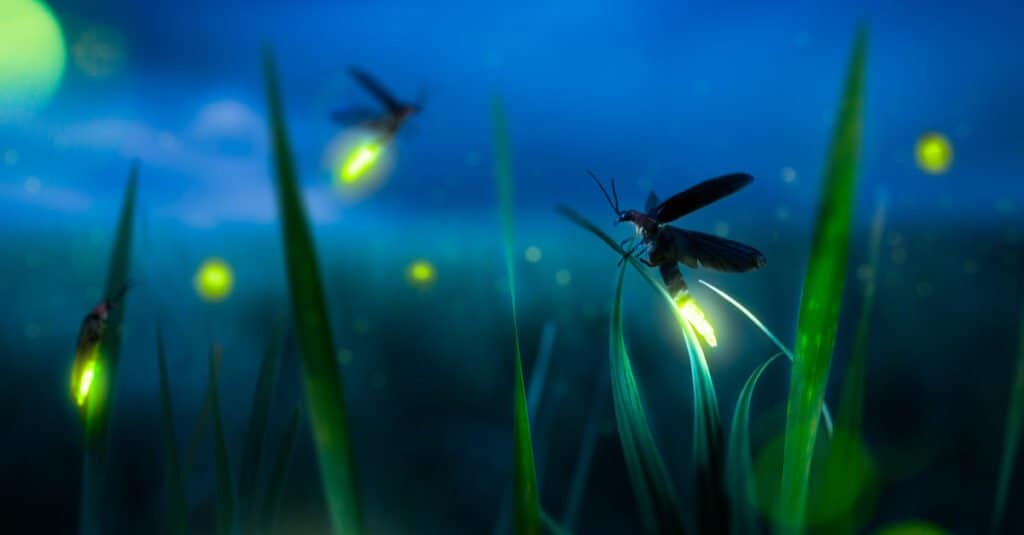
Fireflies hibernate in their larval state underground or underneath warm and thick tree bark.
©Fer Gregory/Shutterstock.com
Fireflies that live in mild winters can survive throughout the winter. However, on average a firefly’s lifespan is 2 months. Fireflies that live in tough winters and colder climates die during winter. The cold and freezing temperatures prove to be too much. However, fireflies hibernate in their larval state underground or underneath warm and thick tree bark. They wake up and emerge in spring.
Is it Good To Have Fireflies in your Yard?
If you see fireflies dazzling the sky in your yard, this is a good sign your garden or yard is healthy. Fireflies look for abundant food and water sources. They prefer moisture and standing water, which is why so many of them live in creeks and swamps. If you want to increase the number of fireflies in your yard, you can install a water fixture. A small birdbath or fountain can increase the moisture in the air and provide a water source. Another idea is to get rid of unnecessary light. Too much light discourages away these fireflies since they are nocturnal and produce their own light. They need to see their light patterns to find a mate.
Fun Facts About Fireflies
- Fireflies aren’t flies or bugs. They are beetles.
- Not all fireflies produce light. Some are active during the day.
- Some species are poisonous to animals and should not be grilled, cooked, or eaten.
- There are fewer fireflies appearing at night because of light pollution.
- It’s hard to document fireflies because of how many species there are.
- Some scientists believe there are still firefly species that we don’t know of yet.
- They are a wonderful and efficient light source but not a heat source. If they heated up like a lightbulb, they wouldn’t survive.
- In the U.S., most West Coast fireflies don’t light up.
- They are only adults for two months.
Up Next:
- The 6 Best Books About Worms From Educational to Philosophical
- Firefly Lifespan: How Long Do Fireflies Live?
- 7 Bioluminescent Bugs That Light Up
The photo featured at the top of this post is © Fer Gregory/Shutterstock.com
Sources
- National Park Service (1970) nps.gov/grsm/learn/nature/fireflies.htm#:~:text=Synchronous fireflies (Photinus carolinus) are,synchronize their flashing light patterns.
Thank you for reading! Have some feedback for us? Contact the AZ Animals editorial team.



